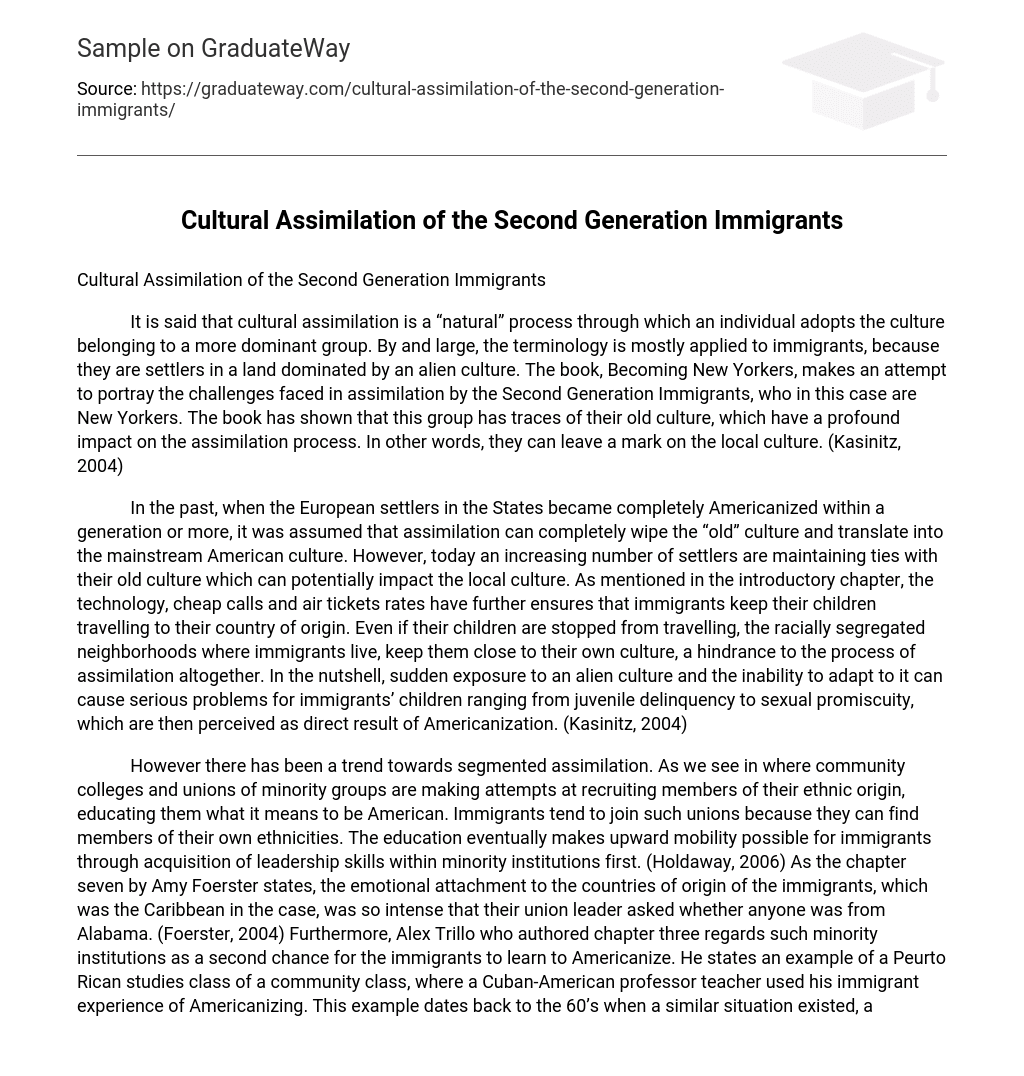It is said that cultural assimilation is a natural process through which an individual adopts the culture belonging to a more dominant group. This terminology is mostly applied to immigrants, as they are settlers in a land dominated by an alien culture. The book Becoming New Yorkers attempts to portray the challenges faced in assimilation by Second Generation Immigrants, who are New Yorkers in this case. The book shows that this group has traces of their old culture, which have a profound impact on the assimilation process and can leave a mark on the local culture (Kasinitz, 2004).
In the past, it was assumed that European settlers in the States would become completely Americanized within a generation or more, leading to assimilation and a complete wipe of their old” culture. However, today an increasing number of settlers are maintaining ties with their old culture, potentially impacting local culture. As mentioned in the introductory chapter, technology and cheap airfare ensure that immigrants can keep in touch with their country of origin. Even if they cannot travel, racially segregated neighborhoods where immigrants live keep them close to their own culture and hinder assimilation altogether. In summary, sudden exposure to an alien culture and inability to adapt can cause serious problems for immigrant children ranging from juvenile delinquency to sexual promiscuity which are then perceived as direct results of Americanization (Kasinitz, 2004).
However, there has been a trend towards segmented assimilation. Community colleges and unions of minority groups are making attempts to recruit members of their ethnic origin and educate them on what it means to be American. Immigrants tend to join such unions because they can find members of their own ethnicities. The education eventually makes upward mobility possible for immigrants through the acquisition of leadership skills within minority institutions first (Holdaway, 2006).
In chapter seven, Amy Foerster states that emotional attachment to the countries of origin is so intense that union leaders asked whether anyone was from Alabama during a Caribbean immigrant meeting (Foerster, 2004). Furthermore, in chapter three Alex Trillo regards such minority institutions as a second chance for immigrants to learn how to Americanize. He gives an example of a Puerto Rican studies class in a community college where a Cuban-American professor used his immigrant experience as an opportunity for Americanization. This example dates back to the 60s when there was a similar situation and gaining admission into New York City University was difficult (Trillo, 2004).
It has been learned that assimilation is an ongoing process, and its progress can be subjectively interpreted. However, one thing is clear: if the process of assimilation does not occur as it should, it can have a damaging impact on local culture and values (Holdaway, 2006).
References
Philip Kasinitz, John H. Mollenkopf, and Mary C. Waters edited the book Becoming New Yorkers: Ethnographies of the New Second Generation,” which was published by Russell Sage Foundation Press in 2004. The authors of chapters 7 and 3 are Amy Foerster and Alex Trillo.
Jennifer Holdaway, Philip Kasinitz, John H. Mollenkopf, and Mary C. Waters (2006) wrote an article for the Migration Information Source titled Becoming American/Becoming New Yorkers: The Second Generation in a Majority Minority City.” It can be accessed on the Migration Information Source website at http://www.migrationinformation.org/Feature/display.cfm?id=440. The article was retrieved on December 17, 2008.





